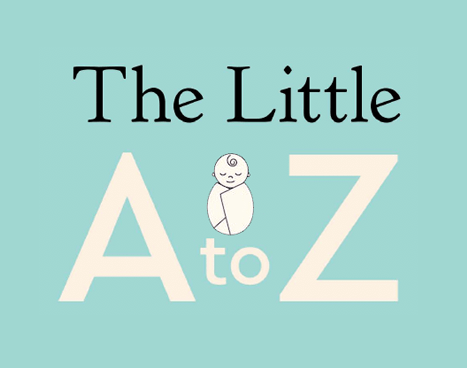Blog Layout
Breaking the Mold, Part 2
Rachel Perks • May 29, 2021
Trust instead of control

Last week we explored the evolution of the work-life balance concept. We focused on an understanding of work-life balance that is much more than simply flexibility; rather that at its heart is the pursuit of gender equality. Furthermore we emphasized that achieving work-life balance requires the setting of new norms about the roles of men and women in the public and private spheres of life, and the priority we attach to those roles.
Last week’s newsletter used the the work of Professor Lotte Bailyn, specifically her book, Breaking the Mold, as the backdrop for this discussion. We concluded that, at the time of writing, the 1990s workplace and workforce were drastically changing —requiring some pretty fundamental re-thinks of defining the ‘optimal’ worker, and the manner in which workplaces prepare and manage talent with this stereotype in mind. The optimal worker responds to a demand of total commitment to their workplace and a control over where and how they work. This may have all been fine when households typically had only one person working and earning outside the home. But as society and our economies have shifted to a very high percentage of dual-income households, the classic mold of the optimal worker is, quite simply, no longer optimal (if it ever really was). It forces sacrifices and stress both for individuals and their households, and all unnecessarily so. For as Bailyn argues it is rather the approach to managing and nurturing talent that is flawed, not the desire of people to contribute and thrive both in their public and private lives. We ended last week’s newsletter by asking ourselves, whether, 30 years down the road, with the greatest disruption our modern workplaces will ever experience, can this be the tide that could positively turn workplace norms and practices, in order for true work-life balance to be achieved? A work-life balance model that which places gender equality squarely at its core.
Reassuring is the manner in which Bailyn sets out in the second half of her book to frame the redesign of workplace performance. She leads in with a very pertinent question for today, “What happens when we take the ‘office’ away?” Will companies be able to readjust the indicators they use to evaluate performance by? And what would be the new indicators to replace ‘long hours’ and ‘face time’ as the means of assessing performance?
Bailyn draws from a variety of company case studies to examine the relationship between productivity and freedom of schedule. The majority of her case studies from the 1990s are in fact ones with remote working arrangements. Recall this is the 1990s when technology was not as commonplace or robust as it is today. She uses the evidence gathered from several company experiments in early day “WFH” to argue that people actually perform better and seek to work harder for their employer when given the freedom to determine the use of time. So here we see a shift from a performance indicator focused on measuring hours and visibility in the office to one centered on task completion. Such a shift in evaluating performance, however, requires relinquishing traditional management practices centered on control of employees to one centered on trust, empowerment and autonomy. Most importantly it requires managers actually knowing their staff’s portfolio, so they are able to better assess their performance from a distance.
In essence what Bailyn was advocating for in the 1990s was a workplace culture that signaled to its employees that we trust your professionalism and commitment to getting your work done in a self-directed manner. By pursuing the reframing of the workplace culture, we dispense with individual negotiations and accommodations on flexibility (which as we saw last week tend to be taken up mainly by women and at a cost to their careers) towards a blanket culture of flexibility in workplaces that does not favor nor discriminate any one person. No longer are negotiations required for a parent who wishes to do school drop off and pick up. Rather it is implied that all are free to do so, or whatever other responsibilities they may have at home, without having to explain themselves. The key here is that managers trust in their talent. As Bailyn states, “It is about giving employees operational autonomy while maintaining strategic control [i.e. oversight]”.
The other crux of the dilemma which Bailyn carefully outlines is that of the traditional career progression. One that typically expects total dedication from an employee, most especially in the early years, followed by steady, high work intensity over decades. She challenges this model, calling for “Planned Discontinuity Careers.” At closer look what we see is in fact the pattern that increasingly working mothers pursue over the course of their careers: a big ramp up prior to children, followed by a coasting until children hit some early school age, followed by a second ramp up as children start to leave the nest. Ample evidence shows the effect this has on their careers, one in which women often drop out of the workforce or lose career progression in the middle band period, or may remain but delay significantly their pursuit for top management positions due to the competing pressures at home. The middle band period is in fact the focus of so much attention these days, as companies continue to face significant obstacles in retaining female talent for C Suite positions and Boards. In its simplest terms, the pipeline breaks during middle management years unless women continue to struggle to balance family and work obligations, at a significant cost to their personal and familial well-being.
So why is Bailyn’s discontinuity model refreshing? Because she argues it is not to be used as a ‘second track’ for women. Rather, discontinuity should become the norm for workplaces. There is merit in the idea that we can’t just climb, climb, climb. We need to rest. We should take moments out to offer our attention more fully to our aging parents or our growing kids. By rewiring entire organizations to view careers in this way actually allows men, just as much as women, to take up important flexibility benefits that they may face pressure to decline—parental leave, extended leaves of absence to be with sick parents or young children, etc. By bringing what has been for the last few decades parallel but unrelated and entirely unintentionally gendered career tracks we actually might move the needle on many of the important gender indicators modern workplace cultures are concerned to meet.
In effect, what Bailyn helps us to see is that gender equality in the workplace is really about changing the very norms around what performance and careers look like. As she eloquently points outs, true gender equality is not about equal salary or equal opportunity for advancement. Rather it is about equal life satisfaction. Here we can look inside the very definition of gender: definitions of roles and responsibilities of men and women in both public and private life. Men, just as much as women, should be able to achieve this life satisfaction —rebalancing opportunities for them at home, as we also allow women to ‘lean in’ more.
Next week we are going to put this all into perspective as we observe the current debates on the ‘return to the office’ and the ‘hybrid workplace’ solutions that are being discussed. We’ll critically ask whether our workplaces have learned anything from the WFH experiment of the last 16 months. Or whether calls back to the office, as seen from some of the largest executives in America, give us pause for concern that once again we have not learned a thing about new modes of working. We will also outline some of the most promising initiatives and resources out there for working parents to help make work-life balance changes they are eager to see become permanent, even as the office calls them back.
Until then, take a moment to think about your pre- and current COVID work-life balance. Knowing every thing you now know of your capabilities, and thinking back to anything in the past patters of day-to-day life that was desirable or not, what is the one thing you’d like to achieve going forward for your own work-life balance? How would you go about articulating that to yourself and your partner? It could be “I want to drop my son /daughter off for school 3 days a week.” Or “I want to take Fridays off in the summer when the kids are out of school.” Whatever it might be, come back next week with it in your back pocket. Though Baiilyn rightly points to the need for an entire reset of our workplace cultures, until companies lead from the top on this, we as individuals will need to lead by example.The body content of your post goes here.
Share
Tweet
Share
Mail









